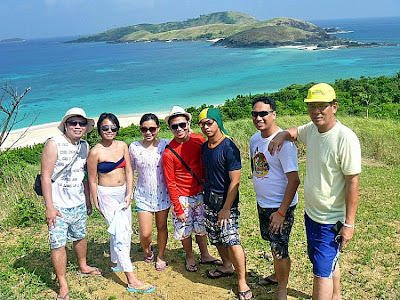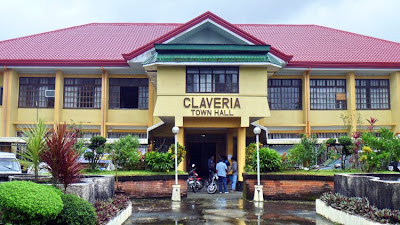 |
| A pristine paradise discovered |
Part of my itinerary during my first week of February visit to Camarines Norte was to camp overnight at the famed Calaguas Islands, a group of 17 islands northeast of Daet under the jurisdiction of the town of Vinzons. This was not to be as three days of continuous rain prevented us from doing so. Two months later, I was again invited back in the province during the peak of summer, covering the 4th Bagasbas Summer Festival in Daet with blogger Mark Vincent Nunez. This time the weather was perfect, with bright sunshine, clear skies and calm seas, and Mark and I were again invited by Provincial Tourism Officer Atty. Debbee Francisco to visit these islands famed for their Boracay-like (minus the commercial development) white sand beaches.
 |
| Minaongan Fish Port in Paracale |
Aside from Debbee and Mr. Amable Miranda, a member of her staff, and ABC TV 5 crew Ms. Justine Santos and cameramen Mr. Amor Casiano and Mr. Dencio Suing; Mark and I were joined by participants of the summer surf festival who availed of the special participant’s price of PhP1,350 per person (normal rates range between PhP1,800-2,300) which included the boat ride to and from the island, tents and two meals with snacks. They include Ms. Joie Lacson, Ms. Iya Yujuico, Ms. Katrina Cruz, Ms. Lei Reinares and Mr. Philipp Cabales of www.pakyaw.com; Mr. Arnel Pahuway of World Vision; and Mr. Darryll Montebon of Jubilee Christian Academy.
 |
| Survivor Calaguas |
From Daet, we all boarded a van for the 38-km. drive to Minaongan Fish Port in Paracale, arriving there by 2:30 PM. Here, we all boarded a large, 25-pax outrigger boat. Provisions for our overnight stay were loaded as well. The boat ride took all of two hours, passing a number of rocky outcrops and beautiful islands with white sand beaches, and we landed on a cove called Mahabang Buhangin (“long sand”) at the 8 km. long Tinaga Island, the most frequented camping and swimming site for tourists. The beach was everything it was hyped up to be: powdery fine white sand, crystal clear waters and blue skies.
 |
| On our way |
It was now late in the afternoon (4:45 PM) when we landed and, once the provisions were landed, we all set up our respective tents in a shaded area, Mark and I staying in one of the seven tents. A comfortable hammock was already in place. As the beach faced the west, we were in for a magnificent sunset show. After a delicious dinner of grilled fish and chicken, we all shared a good chat and laughs while toasting marshmallows over a bonfire. It was already late in the night when we called it a day.
 |
| Sunset at Mahabang Buhangin |
Come morning, we awoke to a delicious Filipino breakfast of fried rice, fried egg, hot coffee and crispy dilis (anchovies) and espada. Dabbing on a lot of sunblock, we all savored the sand, sun and sea, doing snorkeling, sunbathing as well as swimming. Later, some of us tried to burn our excess calories by walking along the beach and then climbing up a nearby hill. The view up there was fantastic, with a bird’s eye view of Mahabang Buhangin on one side and the nearby Guintinua Island and other smaller islands on the other side. A photographer’s dream, it was truly beauty from every camera angle. which we all indulged in, kamayan style.
 |
| Mahabang Buhangin seen from the hill |
Our cameras also espied boatloads of tourists coming in from the mainland, it being a Sunday weekend. It was time to go and, it was with regret that we went down the hill. Back on the beach, many boats were unloading their cargo of tourists, surfer friend Mr. Oween Andrade and his family among them, plus their provisions. It was just fitting that we left by 10 AM, giving up our campsite to these tourists, as we wanted to avoid the influx of this maddening crowd. We thus left the island with bittersweet memories, hoping one day to again savor its beauty. Quoting from the lyrics of an Ogie Alcasid song, “Sana Maulit Muli.”















